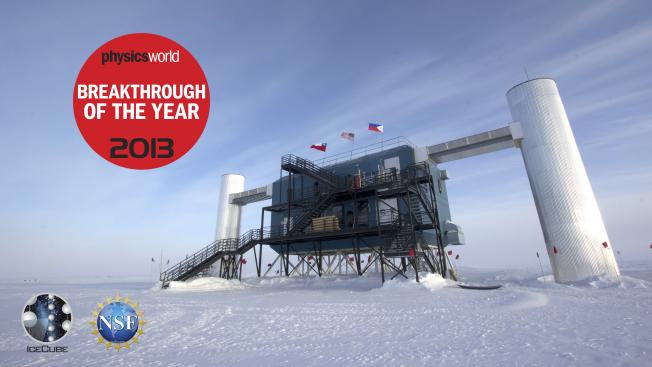Time-Integrated Searches for Point-like Sources of Neutrinos with the 40-String IceCube Detector
ArXiv 1012.2137 (2010)
Abstract:
We present the results of time-integrated searches for astrophysical neutrino sources in both the northern and southern skies. Data were collected using the partially-completed IceCube detector in the 40-string configuration between 2008 April 5 and 2009 May 20, totaling 375.5 days livetime. An unbinned maximum likelihood ratio method is used to search for astrophysical signals. The data sample contains 36,900 events: 14,121 from the northern sky, mostly muons induced by atmospheric neutrinos and 22,779 from the southern sky, mostly high energy atmospheric muons. The analysis includes searches for individual point sources and targeted searches for specific stacked source classes and spatially extended sources. While this analysis is sensitive to TeV-PeV energy neutrinos in the northern sky, it is primarily sensitive to neutrinos with energy greater than about 1 PeV in the southern sky. No evidence for a signal is found in any of the searches. Limits are set for neutrino fluxes from astrophysical sources over the entire sky and compared to predictions. The sensitivity is at least a factor of two better than previous searches (depending on declination), with 90% confidence level muon neutrino flux upper limits being between E^2 dN/dE ~ 2 - 200 \times 10^-12 TeV cm^-2 s^-1 in the northern sky and between 3 -700 \times 10^-12 TeV cm^-2 s^-1 in the southern sky. The stacked source searches provide the best limits to specific source classes. The full IceCube detector is expected to improve the sensitivity to E^-2 sources by another factor of two in the first year of operation.Probing the anisotropic local universe and beyond with SNe Ia data
ArXiv 1011.6292 (2010)
Abstract:
The question of the transition to global isotropy from our anisotropic local Universe is studied using the Union 2 catalogue of Type Ia supernovae (SNe Ia). We construct a "residual" statistic sensitive to systematic shifts in their brightness in different directions and use this to search in different redshift bins for a preferred direction on the sky in which the SNe Ia are brighter or fainter relative to the 'standard' LCDM cosmology. At low redshift (z<0.05) we find that an isotropic model such as LCDM is barely consistent with the SNe Ia data at 2-3 sigma. A complementary maximum likelihood analysis of peculiar velocities confirms this finding -- there is a bulk flow of around 260 km/sec at z \sim 0.06, which disagrees with LCDM at 1-2 sigma. Since the Shapley concentration is believed to be largely responsible for this bulk flow, we make a detailed study of the infall region: the SNe Ia falling away from the Local Group towards Shapley are indeed significantly dimmer than those falling towards us and on to Shapley. Convergence to the CMB rest frame must occur well beyond Shapley (z>0.06) so the low redshift bulk flow can systematically bias any reconstruction of the expansion history of the Universe. At high redshifts z>0.15 the agreement between the SNe Ia data and the isotropic LCDM model does improve, however, the sparseness and low quality of the data means that LCDM cannot be singled out as the preferred cosmological model.Probing the anisotropic local universe and beyond with SNe Ia data
(2010)
Search for a Lorentz-violating sidereal signal with atmospheric neutrinos in IceCube
ArXiv 1010.4096 (2010)
Abstract:
A search for sidereal modulation in the flux of atmospheric muon neutrinos in IceCube was performed. Such a signal could be an indication of Lorentz-violating physics. Neutrino oscillation models, derivable from extensions to the Standard Model, allow for neutrino oscillations that depend on the neutrino's direction of propagation. No such direction-dependent variation was found. A discrete Fourier transform method was used to constrain the Lorentz and CPT-violating coefficients in one of these models. Due to the unique high energy reach of IceCube, it was possible to improve constraints on certain Lorentz-violating oscillations by three orders of magnitude with respect to limits set by other experiments.Measurement of the atmospheric neutrino energy spectrum from 100 GeV to 400 TeV with IceCube
ArXiv 1010.398 (2010)



